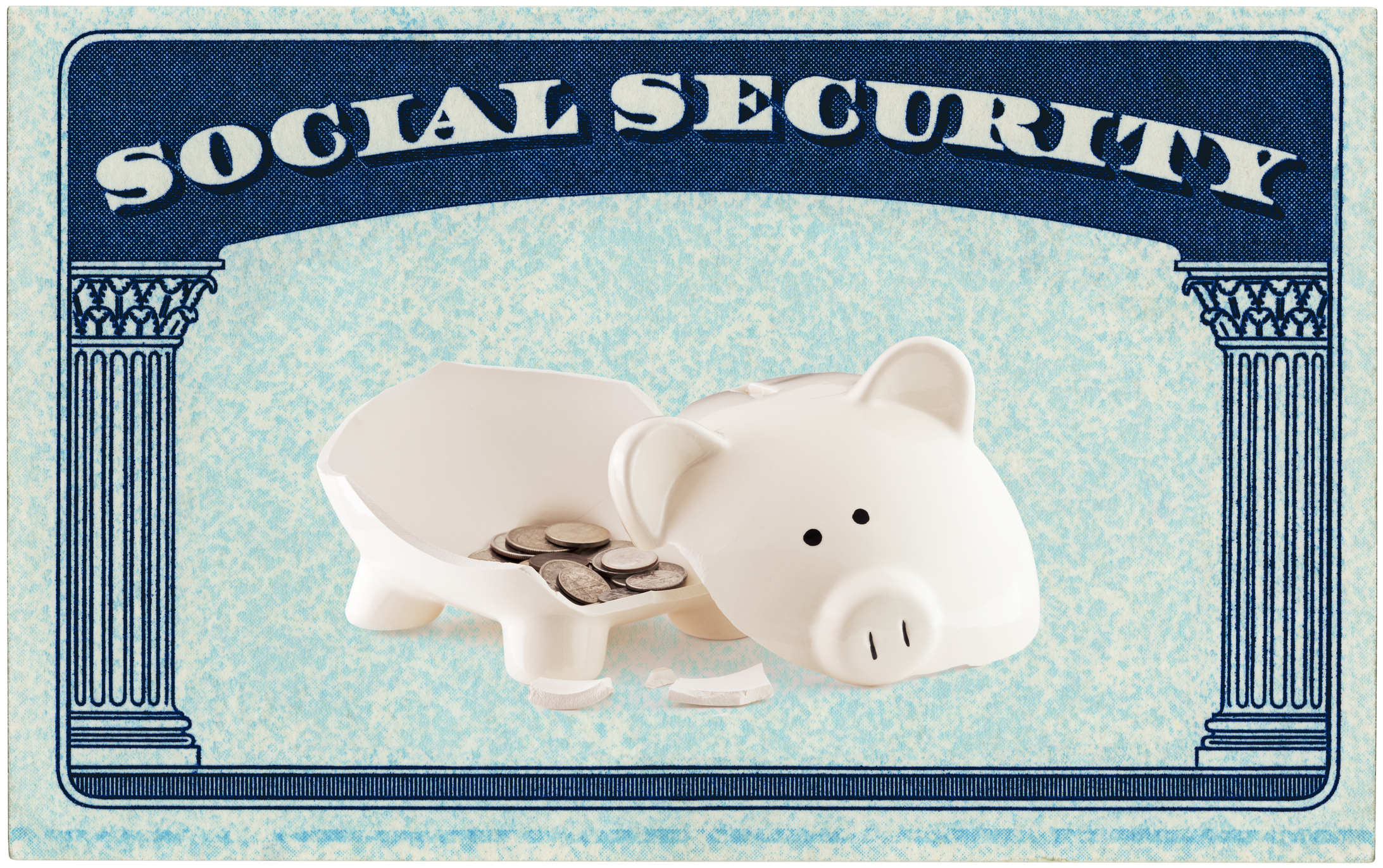Blue Chip Stocks of Tomorrow
Invest in these six little-known companies before everyone else discovers them.

You may not recognize their names, but a host of midsize companies are poised to be the brand names of the future — at least as far as investors are concerned. They're companies such as C.H. Robinson, which has become the Priceline of the industrial-transportation world while recording 17% annual earnings growth over the past decade; Generac, which is seeing demand explode for its home generators; and Catamaran, which helps Americans cut through the clutter of drug-benefits management.
6 Great Stocks You've Never Heard Of
Not surprisingly, shares of these fast-growing, high-quality companies don't come cheap. But when you buy tomorrow's blue chips — companies that stand a good chance of graduating to gargantuan status and that are likely to thrive in the toughest economic environments — you have to be willing to pay up a bit. This kind of stock can serve as a cornerstone of your portfolio for decades to come. "Whenever I find a company that is really durable and able to grow 10% to 15% a year in any economy, I am willing to give it a little more leash," says Joe Milano, manager of T. Rowe Price's New America Growth Fund.
Below we identify six fast-growing midsize companies (none of them household names) that are likely to deliver solid returns to shareholders for years to come.
From just $107.88 $24.99 for Kiplinger Personal Finance
Become a smarter, better informed investor. Subscribe from just $107.88 $24.99, plus get up to 4 Special Issues

Sign up for Kiplinger’s Free Newsletters
Profit and prosper with the best of expert advice on investing, taxes, retirement, personal finance and more - straight to your e-mail.
Profit and prosper with the best of expert advice - straight to your e-mail.
Aircraft leaser
Air Lease Corp. (symbol AL) buys and leases out commercial aircraft. Launched about three years ago as the economy was just coming out of recession, Air Lease is both the youngest and smallest company on this list, with a market value of $2.2 billion. But it's not likely to stay small for long. The Los Angeles company has amassed a fleet of 142 planes, which it has leased to 66 airlines around the world. In the process, revenues and profits have soared. During the first nine months of 2012, Air Lease's revenues doubled from the same period in 2011, and earnings more than tripled.
And Air Lease isn't close to cooling its jets. By the end of 2012, it had secured commitments to lease all 70 of the aircraft it is slated to receive between now and the end of 2014, as well as a number of the planes that will be delivered in 2015 and 2016. Analysts expect Air Lease — which is headed by Steven Udvar-Házy and John Plueger, the former top dogs at International Lease Finance — to generate annual earnings gains of 43% over the next three to five years.
Maxim Group analyst Ray Neidl says that although Air Lease's price-earnings ratio is higher than that of many of its rivals, the stock is worth it. Not only have the company's execs proved adept at buying and leasing aircraft at good prices, the business is booming. Aging aircraft fleets here and abroad require updating. Even if global economic growth remains subpar, airlines should see the benefit of leasing from Air Lease's more fuel-efficient fleet. Neidl sees the stock climbing to $28 within a year.
Drug-benefits manager
Catamarans are sleek, double-hulled boats adept at cutting through water. Catamaran Corp. (symbol CTRX) makes its mark by slicing through health care paperwork to manage pharmacy benefits for some 25 million Americans. What gives the Lisle, Ill., company an edge is that it started as an information-technology provider, selling management systems to other drug-benefits managers. That means its software is state-of-the-art, says Brooks O'Neil, an analyst with Dougherty & Co.
Better technology means better monitoring, which translates into more-effective health care at a more affordable price. The old system, in which people handed pharmacists written prescriptions, often resulted in patients receiving a shopping list of drugs that sometimes reacted poorly with one another and created new medical problems. Catamaran's software spots potential drug conflicts. And at a time when a growing number of people suffer from chronic ailments such as diabetes and high blood pressure, Catamaran's systems can even alert doctors when it appears that a patient isn't keeping up with his or her medications. The company's software flags files when maintenance drugs aren't renewed on schedule.
Catamaran's growth has been stunning. The company rang up sales of $93 million in 2007. In the first nine months of 2012, revenues were $6.6 billion, and O'Neil thinks the figure will reach $15 billion in 2013 and grow at an annual rate of 30% to 40% for some time thereafter. That's partly because as the population ages, the whole pharmacy-management industry is growing. But it's also because Catamaran is nabbing an increasing share of the market, a trend that O'Neil is convinced will continue. With a market value of $10.3 billion, Catamaran edges C.H. Robinson for largest company on our list.
[page break]
Blackout beneficiary
There's nothing like a rash of storm-related power outages to get people thinking about springing for a backup generator. And that spells opportunity for Generac Holdings (symbol GNRC). A maker of both portable and standby generators, as well as power washers and portable floodlights, Generac has generated annual earnings growth of 68% over the past three years.
The Waukesha, Wis., company controls 70% of the market for standby home generators. These devices — Generac's cornerstone product — are permanent fixtures that are attached to a gas line and connected to a home's electrical system. Unlike the typical portable generator, which needs to be started up and connected to the house with extension cords, Generac's standby system flips to generator power virtually automatically. Although Generac's standbys cost more than portable generators, the company has found that about half of those who buy movable systems eventually trade up to a standby model. Because some 12% of Americans have portable systems and just 2.5% have standby generators, Generac could easily double its business. The company is also expanding overseas and boosting its power-washer and portable-lighting businesses. Jeff Hammond, an analyst with KeyBanc Capital Markets, thinks that combination will result in double-digit profit growth for many years to come. He sees the stock at $41 within 12 months.
Data provider
Knowledge is power, goes the old saying. But IHS Inc. (symbol IHS) may rewrite the adage to replace power with profit. The Englewood, Colo., information-services firm compiles data on everything from oil wells and cars to security concerns and regulatory demands. It sells the figures and its analysis to companies hoping to coax more oil out of abandoned wells, automakers looking for a competitive edge, and engineering firms trying to keep pace with a rapidly changing regulatory environment.
Businesses and governments in more than 165 countries rely on IHS to provide the data and analysis needed to succeed in a world where economic and political structures are changing rapidly. In the process, IHS has become a stock market darling, with its shares nearly tripling in price since the market's 2009 trough. The company's future remains bright, says Morningstar analyst Michael Corty. "It's a great business and a great stock," he says.
The only caveat? Wall Street is so in love with this business-to-business niche that IHS shares can get pricey, leaving it vulnerable to seemingly inconsequential developments. Last September, the stock dropped from $119 to $91 after the company made a modest adjustment to its earnings projections. IHS expects earnings to grow 11% to 12% a year over the next two years — hardly shabby in a dicey worldwide economy, but not as impressive as analysts' predictions of 17% annual growth over the next few years. On the bright side, the pullback gives you a chance to buy shares of this great company at more-reasonable prices.
Business travel agent
Consumers who want to get from point A to point B might rely on Kayak or Priceline to find the best fare. Manufacturers that need to ship goods, however, are likely to turn to C.H. Robinson (symbol CHRW), a logistics company based in Eden Prairie, Minn.
Robinson owns no trucks, airplanes, trains or ships; it buys space on trucks, planes, trains and ships owned by others. Because it represents some 37,000 customers, it can get a better price on shipping from the 53,000 transportation providers it contracts with than a manufacturer is likely to get by itself. Meanwhile, shippers, including hundreds of mom-and-pop trucking operations, are able to secure far more business by dealing with Robinson than they could by using their own marketing efforts. "It's a virtuous cycle, in which truckers benefit by getting more business and shippers benefit by getting group rates," says Morningstar analyst Matt Young.
Robinson, the largest transportation broker in the country, is gaining market share, which provides a virtuous cycle for the company, too. As Robinson represents more truckers, Young says, it can negotiate better rates, which in turn attracts more clients. He sees sales and earnings growing at above-average rates for some time, and thinks the shares are worth $73, or 16% more than the current price of $63.
Medical waste disposer
The health care industry produces tons of hazardous waste, such as germ-laden examination robes and used needles and specimen jars. Stericycle (symbol SRCL) cleans up by cleaning up. The Lake Forest, Ill., company provides waste-management services to 535,000 hospitals, blood banks, and doctors' and dentists' offices.
It's a boring business, says T. Rowe Price's Milano, but a good one. The reason? Doctors and dentists don't want the trouble of disposing of hazardous materials themselves, because one false move could get them fined. So Stericycle provides plastic bins for medical waste and picks them up regularly. That's convenient for the medical providers, and it gives Stericycle a unique marketing opportunity. Because the company already has a trusted role in many medical offices and regular pickup schedules, it has easy access to the right decision makers when selling additional services. It also makes it easy for Stericycle employees to sign up new health care providers as they open offices down the hall.
None of this is lost on the company's managers, who brainstorm about which products they might be able to add to their menu every year. The company launched an occupational safety and compliance arm, and it is moving into patient communication — everything from running after-hours answering services to providing reminders that it's time for a checkup. Kevin Steinke, an analyst with Barrington Research, says Stericycle's existing business combined with new opportunities will likely fuel double-digit profit growth for a long time.
Profit and prosper with the best of Kiplinger's advice on investing, taxes, retirement, personal finance and much more. Delivered daily. Enter your email in the box and click Sign Me Up.

-
 Dow, S&P 500 Rise to New Closing Highs: Stock Market Today
Dow, S&P 500 Rise to New Closing Highs: Stock Market TodayWill President Donald Trump match his Monroe Doctrine gambit with a new Marshall Plan for Venezuela?
-
 States That Tax Social Security Benefits in 2026
States That Tax Social Security Benefits in 2026Retirement Tax Not all retirees who live in states that tax Social Security benefits have to pay state income taxes. Will your benefits be taxed?
-
 QUIZ: What Type Of Retirement Spender Are You?
QUIZ: What Type Of Retirement Spender Are You?Quiz What is your retirement spending style? Find out with this quick quiz.
-
 Best Banks for High-Net-Worth Clients
Best Banks for High-Net-Worth Clientswealth management These banks welcome customers who keep high balances in deposit and investment accounts, showering them with fee breaks and access to financial-planning services.
-
 Stock Market Holidays in 2026: NYSE, NASDAQ and Wall Street Holidays
Stock Market Holidays in 2026: NYSE, NASDAQ and Wall Street HolidaysMarkets When are the stock market holidays? Here, we look at which days the NYSE, Nasdaq and bond markets are off in 2026.
-
 Stock Market Trading Hours: What Time Is the Stock Market Open Today?
Stock Market Trading Hours: What Time Is the Stock Market Open Today?Markets When does the market open? While the stock market has regular hours, trading doesn't necessarily stop when the major exchanges close.
-
 Bogleheads Stay the Course
Bogleheads Stay the CourseBears and market volatility don’t scare these die-hard Vanguard investors.
-
 The Current I-Bond Rate Is Mildly Attractive. Here's Why.
The Current I-Bond Rate Is Mildly Attractive. Here's Why.Investing for Income The current I-bond rate is active until April 2026 and presents an attractive value, if not as attractive as in the recent past.
-
 What Are I-Bonds? Inflation Made Them Popular. What Now?
What Are I-Bonds? Inflation Made Them Popular. What Now?savings bonds Inflation has made Series I savings bonds, known as I-bonds, enormously popular with risk-averse investors. How do they work?
-
 This New Sustainable ETF’s Pitch? Give Back Profits.
This New Sustainable ETF’s Pitch? Give Back Profits.investing Newday’s ETF partners with UNICEF and other groups.
-
 As the Market Falls, New Retirees Need a Plan
As the Market Falls, New Retirees Need a Planretirement If you’re in the early stages of your retirement, you’re likely in a rough spot watching your portfolio shrink. We have some strategies to make the best of things.